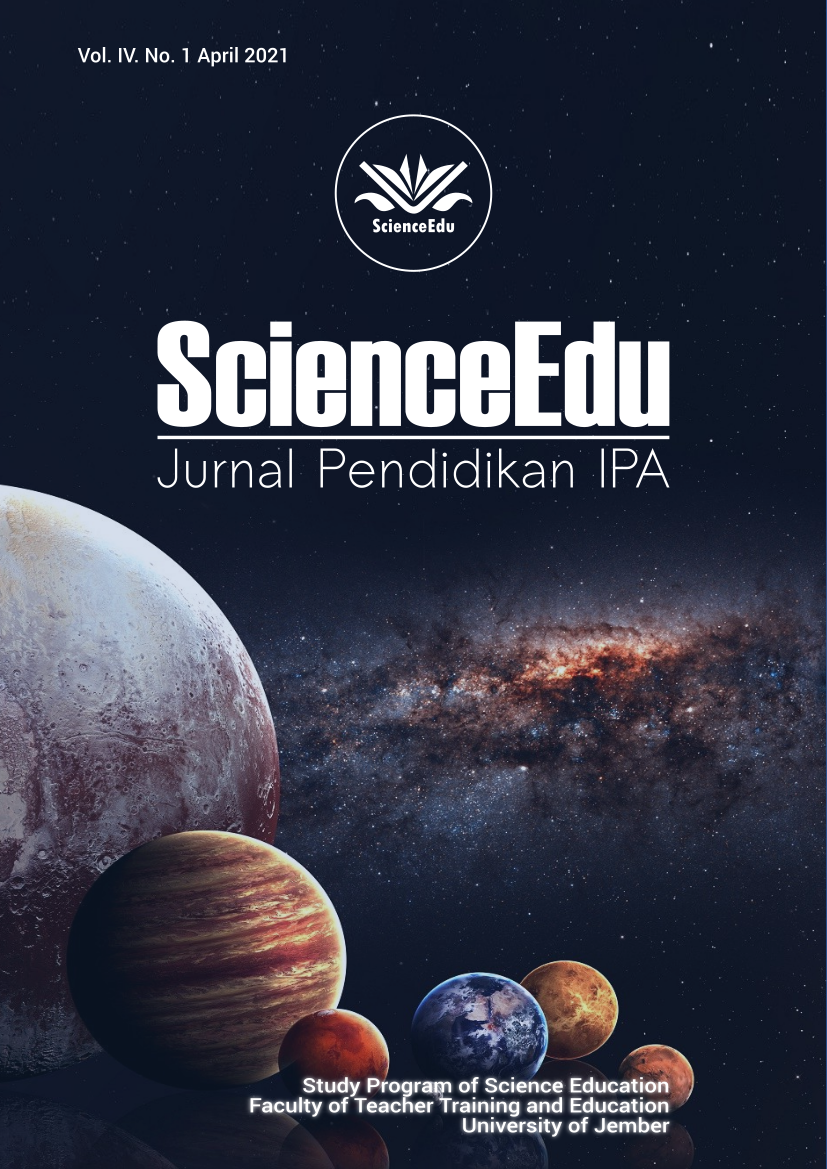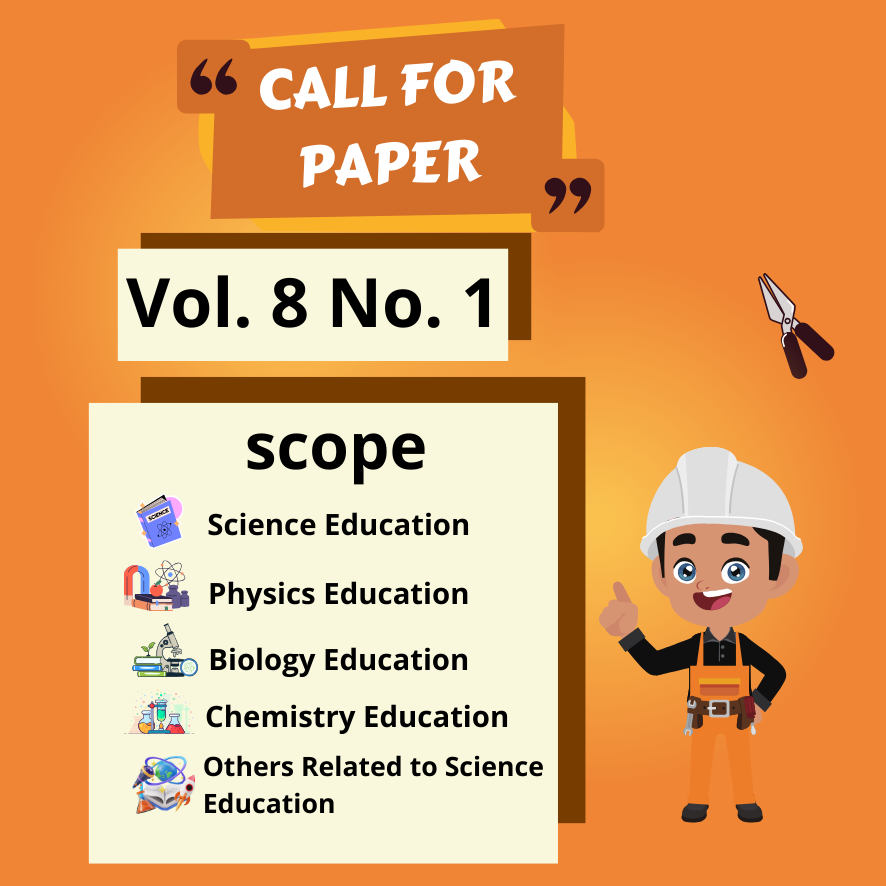IDENTIFY USE OF EDP TO STRENGTHEN STUDENT'S CRITICAL THINKING ABILITY THROUGH LKS
DOI:
https://doi.org/10.19184/se.v4i1.24050Keywords:
Critical thinking, EDP, LKSAbstract
LKS is a teaching material that is often used by teachers in the learning process. Teaching and learning science based on the Engineering Design Process can train thinking processes well. This study aims to determine how the role of EDP is to strengthen students' critical thinking skills. This type of research is qualitative research using a single case study approach. This research was conducted at SMAN Arjasa, Jember Regency with 6 students as participants. Data were collected by observation, interviews, and documentation. Data analysis used interactive model analysis by Miles and Huberman. The credibility test uses the triangulation technique and member check. The results of this study are the use of EDP in student worksheets provides the strengthening of students' critical thinking skills and the most support is at the define, learn, and plan stages. Meanwhile, at the try, test, and decide stages are the results of developing information that has been obtained in the previous stage but with consideration of joint decisions.
Downloads
References
Berland, L., R. Steingut, & Ko, P. (2014). High School Student Perceptions of The Utility of The Engineering Design Process: Creating Opportunities to Engage in Engineering Practices and Apply Math and Science Content. Journal of Science Educational Techbology, (23), 705-720.
EngrTEAMS. (2017). EngrTEAMS: Engineering to Transform the Education of Analysis, Measurement, and Science in a Team-Based Targeted Mathematics-Science Partnership. University of Minnesota & Purdue University Research Foundation.
Henson, K. T. (2004). Constructivist Methods for Teaching in Middle-Level Classrooms. Boston: Allyn and Bacon.
Krajcik, J., & Delen, I. (2017). Enganging Learners in STEM Education. Eesti Haridusteaduste Ajakiri, 5(1), 35-58.
Mifa, M. (2017). Students' ability in designing environmental pollution problem solutions through the Engineering Design Process (EDP). Thesis. Bandung: Faculty of Mathematics and Natural Sciences Education.
Miles, M. B., & Huberman, A. M. (2009). Qualitative Data Analysis. Jakarta: UI Press.
Murwianto, S., Sarwanto, & Sentot, B. R. (2017). STEM-Based Learning in Junior High School: Potential for Training Students' Thinking Skills. The Exposure of Education, Faculty of Teacher Training and Education, University of Jember, 6(4), 69-80.
Prastowo, A. (2016). A Creative Guide to Making Innovative Teaching Materials. Yogyakarta: Diva PRess.
Santoso, S. H, & Mosik, M. (2019). The Effectiveness of STEM (Science, Technology, Engineering and Mathematics) Worksheets to Train Students' Critical Thinking Skills in High School Physics Learning. UPEJ Unnes Physics Education Journal, 8(3).
Schnittka, C. G. (2009). Engineering Design Process Activities and Conceptual Change in Middle School Science. Dissertation: University of Virginia.
Sutawidjaja, & Jarnawi, A. (2011). Learning Mathematics. Jakarta: Open University.
Syukri, M., Soewarno, S., Halim, L., & Mohtar, L. E. (2018). The Impact of Engineering Design Process in Your Teaching Learning to Enhance Science Students Problem-Solving Skills. Journal of Indonesian Science Education, 7(1), 66-75.
Widowati, A., Nurohman, S., & Anjarsari, P. (2017). Developing Science Leaning Material with Authentic Inquiry Learning Approach to Improve Problem Solving and Scientifics Attitude. Journal of Indonesian Science Education, 6(1), 32-40.



